According to the Annual Status of Education Report (ASER) 2014, 51.9% of children in grade 5 are unable to read a simple grade 2 level text. While India’s education problems in the aggregate might seem bad, it is considerably worse in Uttar Pradesh, India’s most populous state. According to ASER 2014, 16.5% of 5 years old children were not enrolled in school (pre-school or school) compared to 3.5% in Himachal Pradesh. As India’s most populous state the actual size, the significance for India’s youth on aggregate is immense. It means that the demographic dividend that commentators of India’s destiny speak of – might become a demographic disappointment. On the doorsteps of villages across are the little projects of the technological enterprises – some of them remarkable and many giving evidence of the looming threat that technology poses to these young children. They will either get on top of it or will succumb to it’s conquest - and to what situation I am not sure.
In the time that I spent in the field, what struck me the most was the innocence and the brutal injustices faced by children – not because they were forced into hard labour or kept away from school – but if I were to be vocal about the statistics presented above, it would be to point out that many of these children were being left behind; that despite being in school (India has an enrollment rate of 97%), they were not learning anything. Many of them set about their days completely lost and unable to even do simple reading and arithmetic. They lose confidence in their ability to understand and persevere or even enjoy their educational journey.
Not unlike it's colonial past - India's education system favors the 'cream' in the name of a deeply flawed meritocracy.
This is why programs and efforts like R&D are important. To me, R&D was a program that challenged the very foundation of the education system and the role of the numerous stakeholders in a child’s journey. It takes children in public schools in Uttar Pradesh (and Bihar) in grades 1 and 2 – exposing them to a curriculum and structure that takes into account the lack of pre-school experience and redefines the role of a teacher from it’s traditional set up – to one where he or she is part of the community.
There were many discussions about the general cost of such a program and while I could visible compare the strengths of the R&D program to that of the ‘current state’, in my purview of what programs in other parts of the world were doing – Pratham’s R&D is one of the cheapest and perhaps considerably more innovative and relevant to the local context.

A child plays a game of arranging letters to form as many words as possible. Unlike in English, Hindi words have vowel extensions which make them unique and numerous.
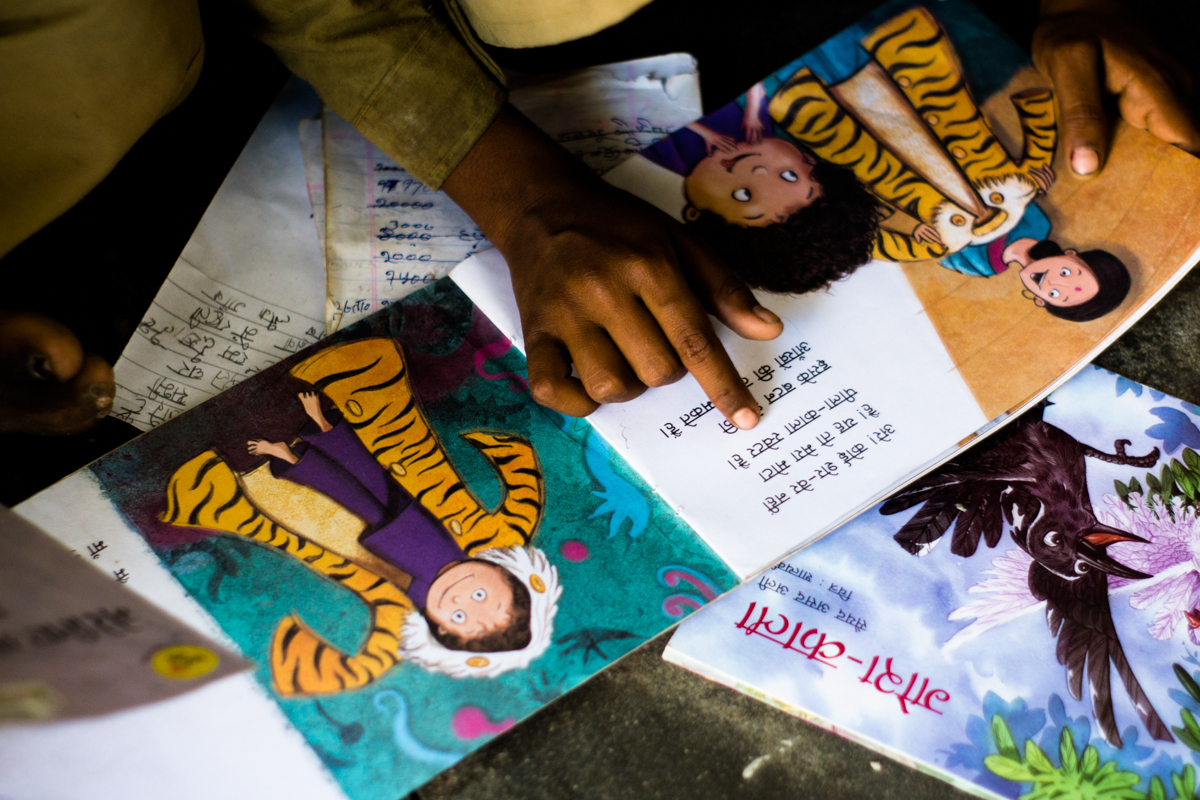
A child reads one of the books created by Pratham Books which are part of the reading corner in the R&D setup.
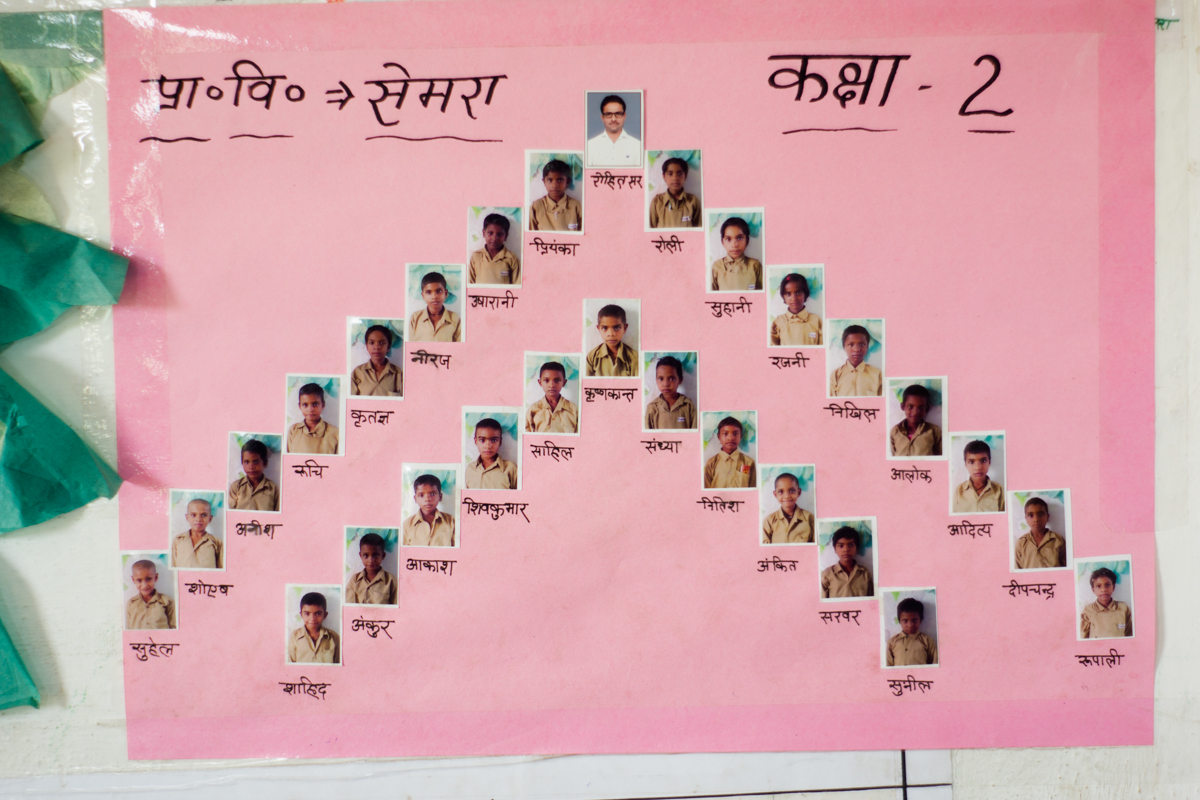
R&D is also about creating a sense of ownership - of the class, classmates and the walls within the classroom. These photographs cement the relationships between these children as well as with their teacher.

Babli Pandey - one of the R&D teachers, engages with one of the pupils doing a different activity than the one that she is attending to. The program's structure allows children to do class, group and individual activities which creates for a stimulating learning environment.

A child in an R&D classroom reads a book - published by Pratham books. The books come in different reading levels which help parents and educators determine the appropriate level of difficulty for the child. This book is yet another that makes up the reading corner in the R&D classroom.

As a contrast to the R&D classroom, we met a Government school headmistress who simultaneously ran 3 classes - owing to the fact that her teachers were sent away on election duty. Until then, I had only heard of such stories but this was the first time that I came to witness such a reality. Not surprisingly, India's education system - despite efforts from the top, is from from being child-centric.

Learning happens everywhere in an R&D classroom. Children are encouraged to write wherever they feel would be good to work out their solutions and ideas. Some of these children decide to have a go at the wall whereas others will try the floor.
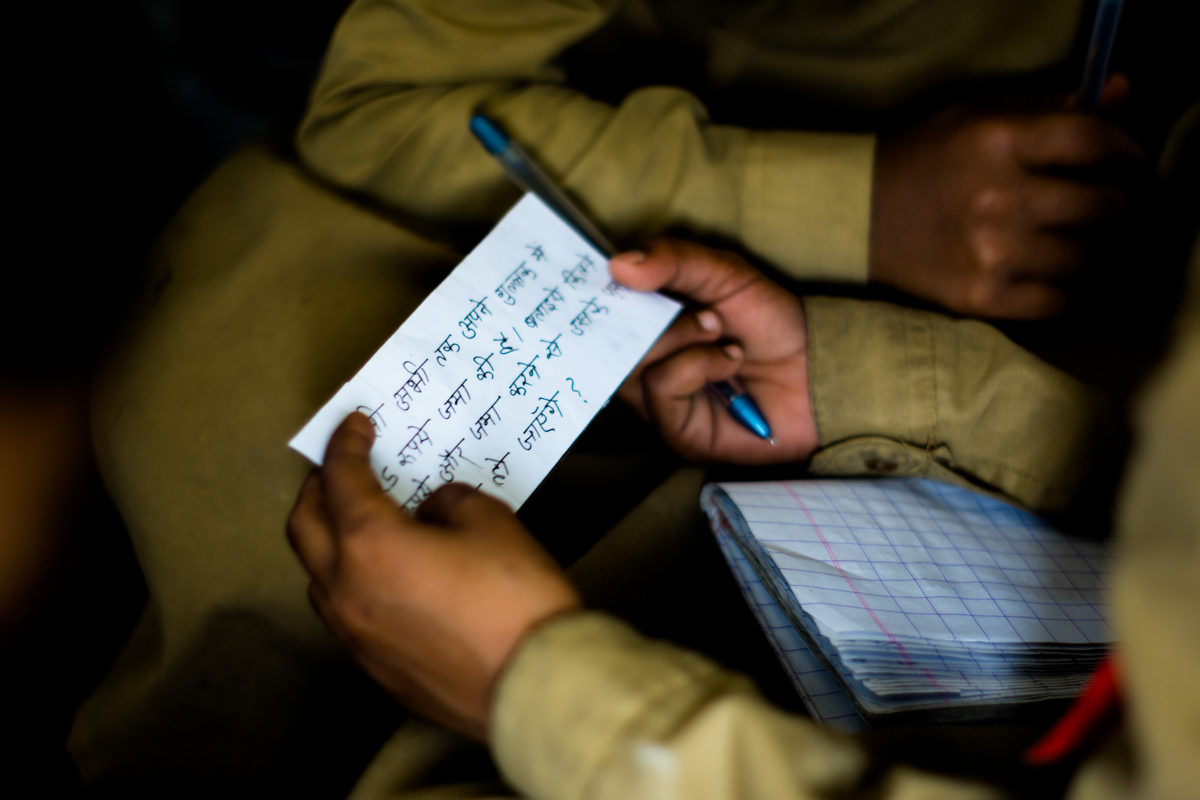
A child is given a word problem designed by his teacher. Across India, I came up several teachers that went out of their way to prepare low-tech Teaching Learning Material. As a teacher myself, I found it thoroughly inspiring and also somewhat unfair with the accusations that teachers would regularly have to shoulder.

These children are part of the same school where teachers have been sent on election duty. Grades 1 and 2 were being taught by Pratham R&D teachers and therefore not obliged or part of the government system. Here, though, students are taught their lessons in the kitchen due to a shortage of classrooms. 2 classrooms and the kitchen are shared by 5 grade levels.
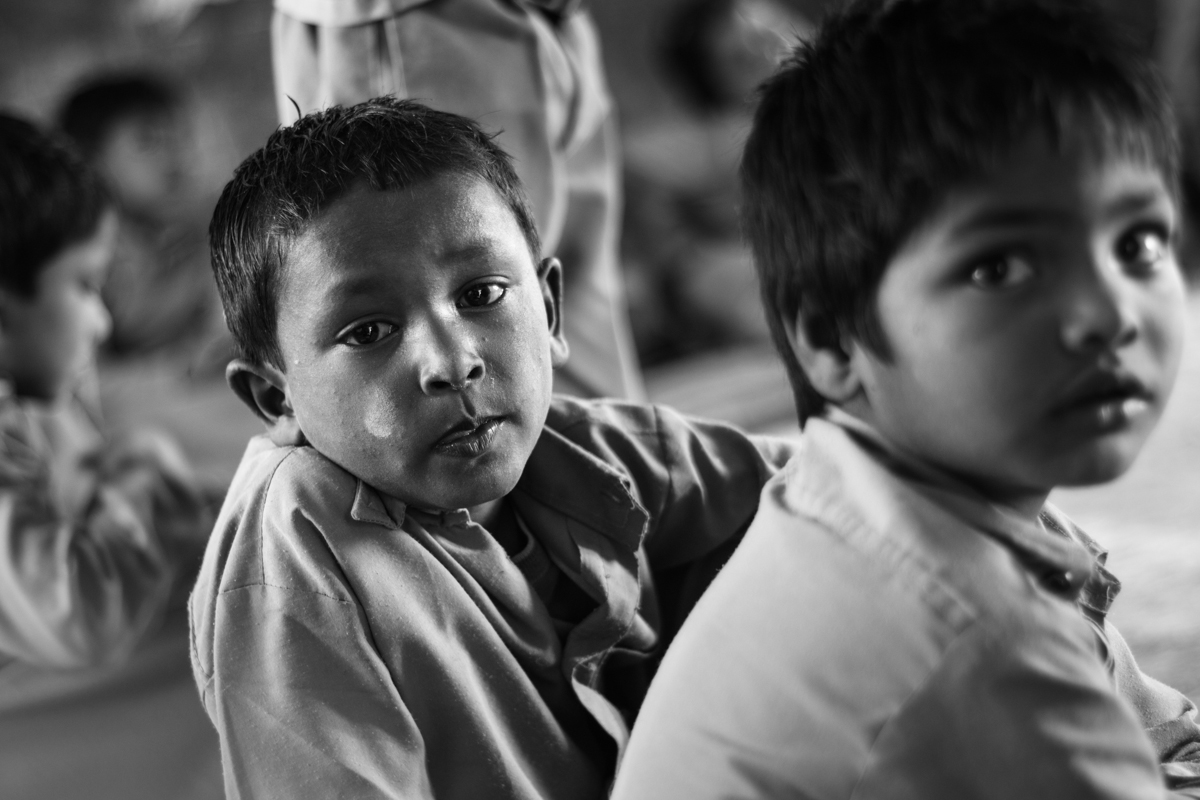
Children look at the photographer thoroughly distracted from their lessons, but with hard evidence of having indulged in some form of chalk-based learning or activity.

This girls is not formally enrolled in the R&D program. Her sister had constantly missed class - which led to her teacher making efforts to find out why. In the absence of a care-taker, her sister was asked to stay at home and baby sit her sister - a common reason why so many girls are out of school in India (and indeed the world over). The only solution was the sister to bring her younger sibling to class. We're told that depending on the activity - she also gets to involve herself. Of course, we would have rather hoped that she was in a playschool among friends of her own age - laughing away - but this is hard given the choices and limitations of India's education system.
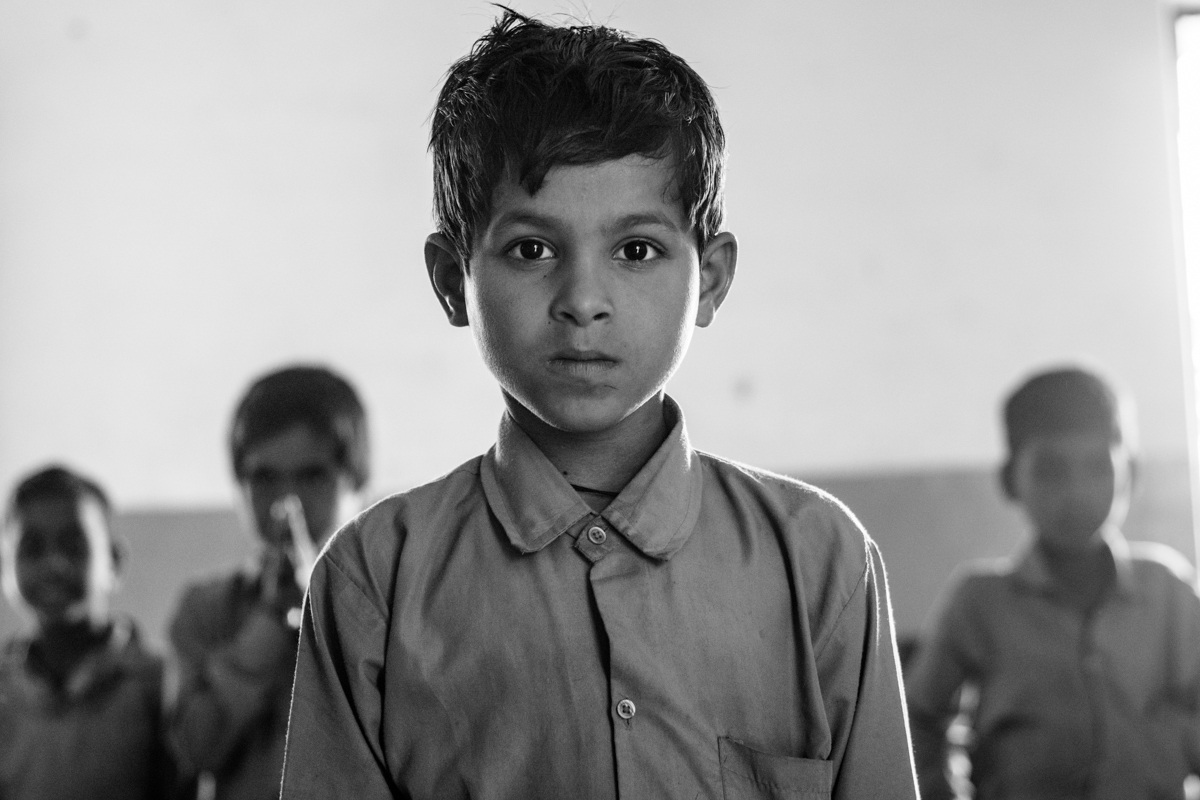
We met this boy at one of the schools that run a more limited version of the R&D program. Through a randomized control, the intervention was designed to determine whether a warm-up school readiness program, the one day R&D program or the 5 day R&D program were the most effective. Children recited some of their warm up play-songs but this boy himself was an incredible host and a great supporter of his class and their overall efforts. I hope these efforts will make leaders out of people like him.
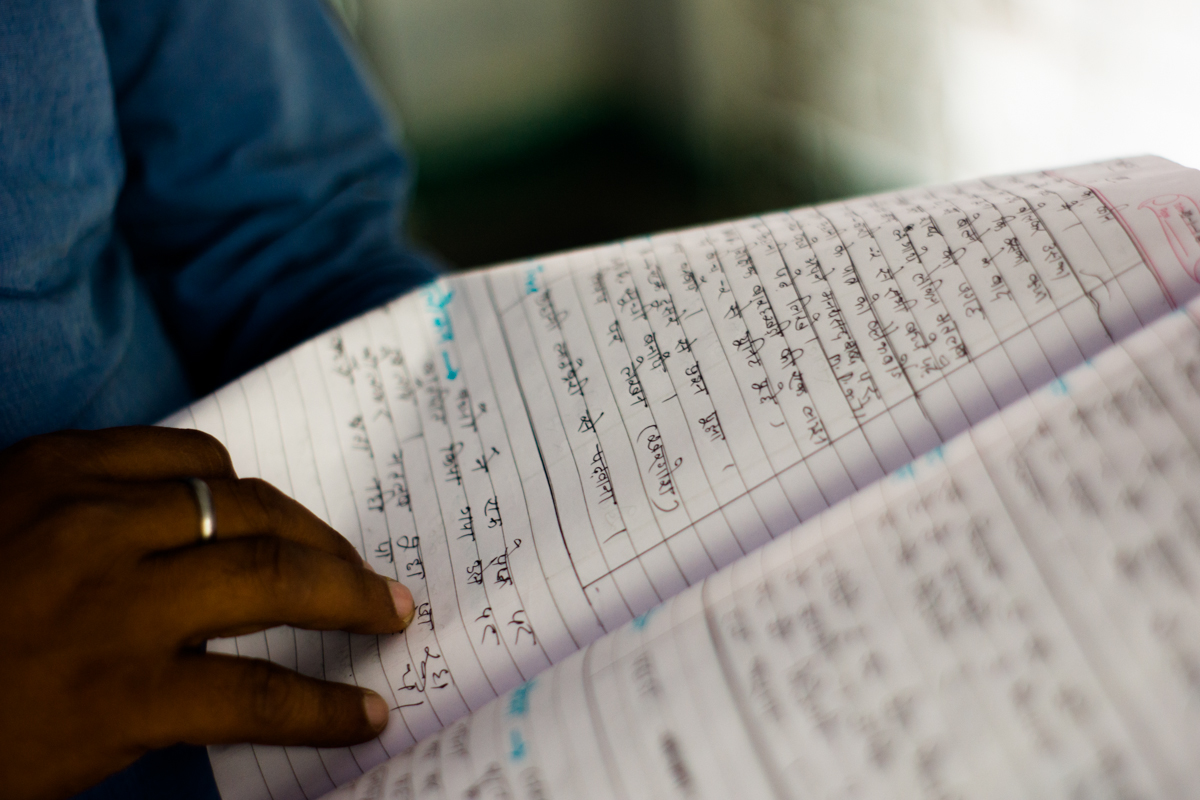
Amrit-Lal, one of the administrators of the program - shows me the detailed lesson plans that are created by the R&D staff for their classrooms. Their preparation and dedication to the class taught me a lot about teaching as a whole.
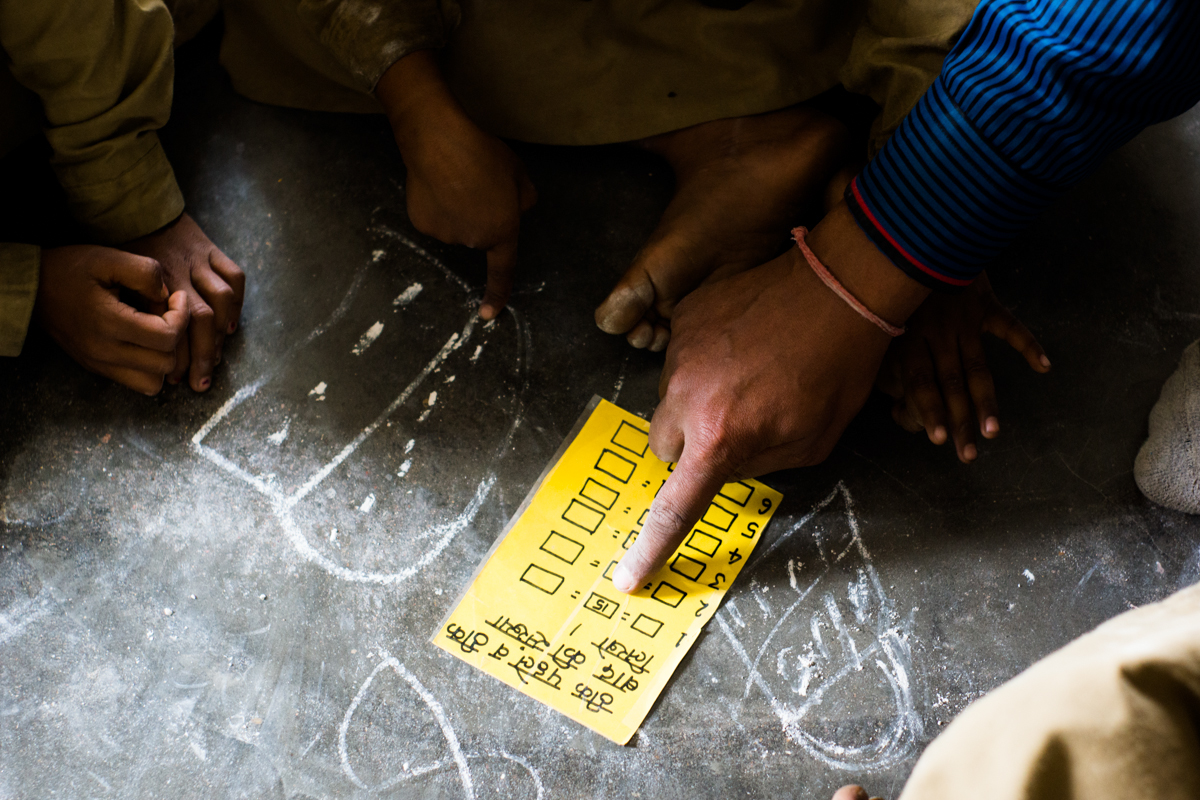
Arvind (not me Arvind) is one of the R&D teachers and works with his students here to explain how to do some of the problems sheets prepared by him.

A student in Arvind's class works through a number and counting puzzle drawn out by him - yet another example of learning and engagement being an open and everywhere concept.
